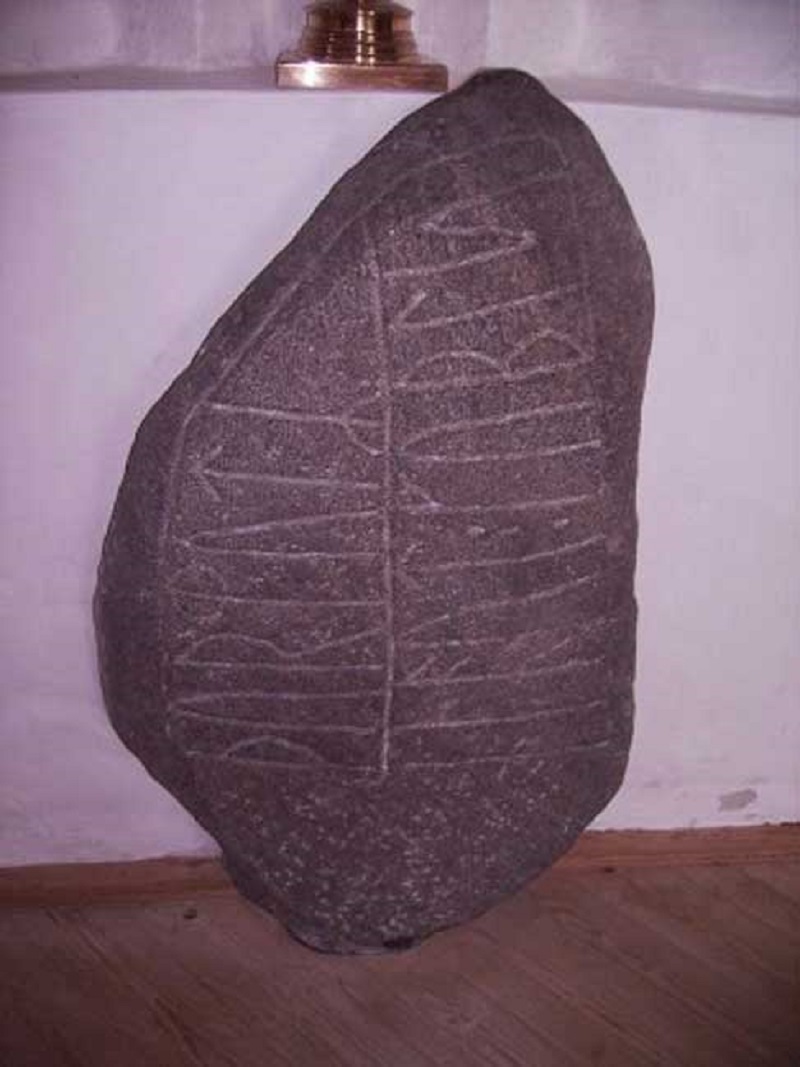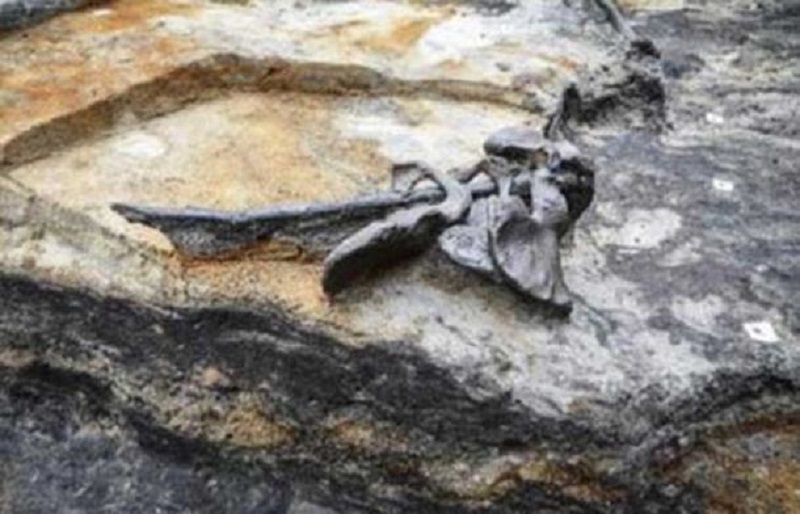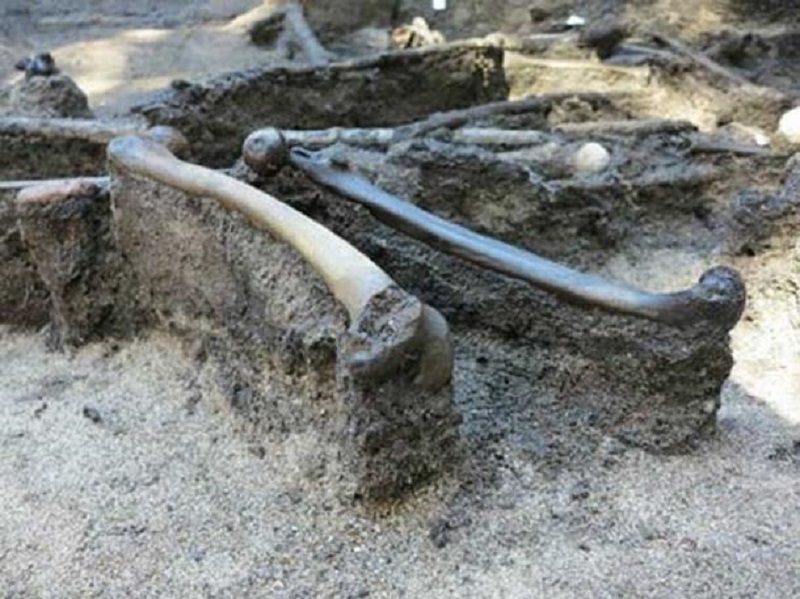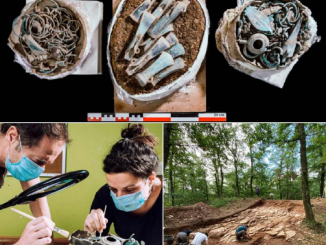In 2012, ancient remains were discovered in a swamp in Denmark – not a rare occurrence. However, after examining the skeletons, archaeologists were startled by the brutal desecration of the skeletons. This chilling discovery tests what we thought we knew about the rituals and beliefs of Iron Age humans. Archaeologists are now trying to piece together what happened to the dozens of dead warriors found at Alken Enge.
Modern humans have many unique and culturally diverse ways of dealing with death and the dead, sometimes through shared traditions of burying the fallen and performing funerary rituals. ceremonies such as memorials and funerals. However, archeology and ancient people continually challenge our preconceived notions about how life and death were experienced and handled in ancient times.
In the Alken Enge wetlands and peatlands, a team of archaeologists found a mass grave containing at least 60 bodies of Iron Age warriors. Their remains were mutilated in gruesome rituals, but only after the dead had lain on the battlefield for months.
LiveScience wrote about the discovery, “At least six months after the soldiers died, their bones were collected, scraped of remaining flesh, sorted, and dumped into the lake. Some are handled in truly strange ways; for example, four pelvises were found tied to a stick.”
Four pelvises on a stick are shown (Alken Enge). Image credit: Peter Jensen, Aarhus University
Unable to know for sure, researchers speculate that the desecration of body parts is an ancient ritual. “It appears that this was a pagan religious sanctuary – a sacred grove – where the victorious end of major battles was marked by ceremonial presentation and destruction of the bones of the defeated. warriors.”
But were these terrible acts of sacrilege a barbaric ritual to vanquish a defeated enemy, as Roman historical records describe? Were they also Iron Age vigilance rituals, ensuring the ghosts of fallen enemies would not return from the grave to terrorize villages or wreak vengeance?
Prehistoric cultures had their own traditions aimed at ensuring the respect of their ancestors and protecting them from dead enemies. The cult of death and the practice of necromancy (‘magical’ rituals involving communication with the dead) were a way of worshiping those who came before or created dangerous monsters.
The femurs of dead warriors. Credit: Skanderborg Museum
Victor Domin of Concordia University writes about incidents of necromancy in the ancient Near East, where “Small handling of the remains of the deceased can cause benign ghosts to transform into malevolent spirits. Negative treatment of the deceased may include improper burial or insufficient offerings.” Perhaps such ‘proper’ rituals could have been revealed in Denmark at the Alken Enge burial site.
Seiðr (seidhr) is a type of Iron Age magic in Scandinavia. Found in the Sagas and other documents, shaman-like magic and rituals were used to divine the future and to curse enemies. Norse folklore (folktales) and ancient beliefs include the myth of the draugr, an undead creature, literally “walker.” Not unlike modern zombies in popular culture, a draugr is a corpse raised from the grave, a decomposing body. It will hunt down and attack those who have wronged it in life, and terrorize the countryside. So horrifying is the prospect of unintentionally creating such a pull that special care must be taken to ensure proper burial of the dead.
Traditionally, iron scissors were placed on the chest of the recently deceased and tree branches were tucked into their clothes. The terrible thing is that needles are inserted into the soles of their feet to prevent them from walking and their toes are tied together. The ‘corpse door’ was considered the most effective deterrent – a special door was made and bodies were passed through. People surround the corpse in an attempt to confuse and disorient the soul of the deceased, after which the door is sealed to prevent a return.
The Nørre Nærå Runestone has a grave binding inscription that is used to ensure the dead remain in their graves.

Nørre Nærå Stone (Soren Moller, Creative Commons)
These types of protective burial rituals can be found around the world. One such example is the ‘vampire’ graves recently discovered in Eastern Europe, where archaeological excavations revealed unusual precautions in the morgue to prevent corpses from returning again as Nosferatu. Teeth were often removed, bodies impaled with wood, and a stone or brick found in the mouth.
Could the broken skulls, dismembered skeletons and strangely disturbed remains at an Iron Age battlefield in Denmark, as researchers suggest, be extraterrestrial rituals? The spear of the victors and the vanquished? Or maybe they also took careful precautions to avoid the supernatural?
These beliefs, rituals, and extreme measures may seem ignorant, barbaric, terrible, or excessive to modern sensibilities, but to the times and the people who practiced them, they were part of inevitability of life – and death.




